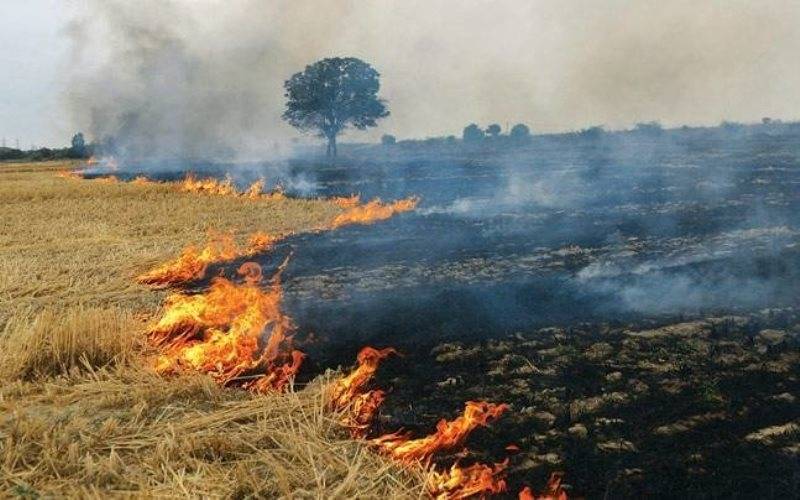
Punjab government expected a dip in stubble burning this year but shockingly the number of incidents has risen. This year stubble burning incidents across the states has touched 12,000 which is highest since 2018.
This rise fears the state government as the smock released by stubble burning affects the lungs and COVID-19 also impact the lungs primarily.
“Punjab has witnessed more than 12,000 incidents of stubble burning in the last five weeks, which is higher than the burning incidents in the last two years,” officials said on Saturday.
Farmers mostly in states like Punjab, Haryana set fire to the leftover crop roots. This practice is widely followed as it is a cheap process to cleat the land for the next crop season. The smoke released during burning is one of the main pollutants in big cities like Delhi and Gurgaon.
This year from April 15 to May 23, 12,574 wheat stubble burning incidents were reported across Punjab according to the data released by Punjab Remote Sensing Centre. In 2019, the number of such incidents recorded was 10,114 and 10,993 in the year 2018.
On Saturday alone 730 wheat straw burning incidents were reported in the states. Which is very high than the recorded incidents last two years on the same day. In 2018, 117 and in 2019, 243 incidents were recorded on this date.
“It is shocking that the farmers are not listening to appeals issued by the state government agencies and farmer organisations. This level of stubble burning is dangerous as the smoke released from burning attacks lungs and the pandemic prevailed at present also damages lungs,” said Harinder Singh Lakhowal, Bharatiya Kisan Union (BKU).
Simultaneously, Haryana started the process to contain stubble burning in the states, Haryana Space Application Centre (HARSAC) actively monitoring such incidents along with district-level committees and officials from the state government.
Haryana has recorded 3,480 incidents of stubble burning in the state, this number is less compared to 6,553 cases recorded at the same time last year.
Districts wise incidents in Punjab vary, the highest wheat stubble burning incidents are recorded in Moga District at 1,153 followed by Amritsar District recording 1,099 incidents. Bathinda District recorded 1,056 and Ferozepur at 1,039 incidents. Mohali District has the lowest number of stubble burning incidents of just 30 recorded events.
To educate farmers about the effects caused by stubble burning to pollution levels and quality of soil Deputy Commissioner Pradeep Kumar Agrawal, recently, released four jingles. These jingles are prepared in a joint collaboration between experts from Punjab Agricultural University (PAU) and the Punjab Pollution Control Board (PPCB).
















